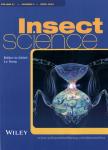Insect host-parasite coevolution in the light of experimental evolution
Insect host-parasite coevolution in the light of experimental evolution作者机构:Experimental Ecology Institute for Integrative Biology D‐USYS ETH Zurich Zurich Switzerland
出 版 物:《Insect Science》 (昆虫科学(英文版))
年 卷 期:2014年第21卷第4期
页 面:401-414页
核心收录:
学科分类:090603[农学-临床兽医学] 08[工学] 09[农学] 0906[农学-兽医学] 081202[工学-计算机软件与理论] 0812[工学-计算机科学与技术(可授工学、理学学位)]
基 金:The authors thank Camillo Berenos and Sonj a Sbilordo for comments, the Swiss National Science Foundation (SNF) for support (Ambizione grants PZ00P3-121777, PZ00P3- 137514, standard research grant 31003A_125144/1 to O. Y. Martin N. A. G. Kerstes was supported by SNF grant 31003A120451 to K. Mathias Wegner), and the Exper- imental Ecology group at ETH Ztirich for being such excellent hosts
主 题:artificial selection immunity Nosema reproduction resistance Tribolium
摘 要:The many ways parasites can impact their host species have been the focus of intense study using a range of approaches. A particularly promising but under-used method in this context is experimental evolution, because it allows targeted manipulation of known populations exposed to contrasting conditions. The strong potential of applying this method to the study of insect hosts and their associated parasites is demonstrated by the few available long-term experiments where insects have been exposed to parasites. In this review, we summarize these studies, which have delivered valuable insights into the evolution of resistance in response to parasite pressure, the underlying mechanisms, as well as correlated genetic responses. We further assess findings from relevant artificial selection studies in the interrelated contexts of immunity, life history, and reproduction. In addition, we discuss a number of well-studied Tribolium castaneum-Nosema whitei coevolution experiments in more detail and provide suggestions for research. Specifically, we suggest that future experiments should also be performed using nonmodel hosts and should incorporate contrasting experimental conditions, such as population sizes or envi- ronments. Finally, we expect that adding a third partner, for example, a second parasite or symbiont, to a host-parasite system could strongly impact (co)evolutionary dynamics.



